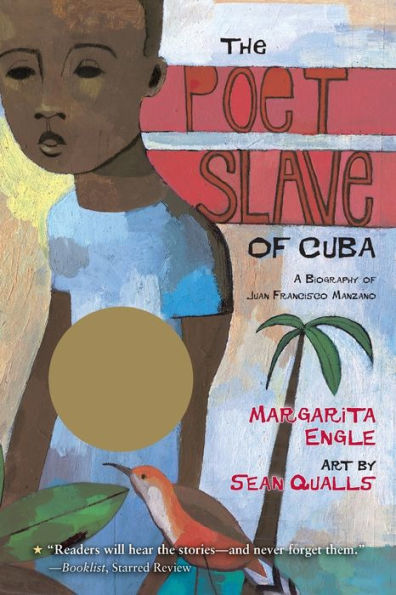Read an Excerpt
Juan
My mind is a brush made of feathers
painting pictures of words
I remember
all that I see
every syllable
each word a twin of itself
telling two stories
at the same time
one of sorrow
the other hope
I love the words
written with my feathery mind
in the air
and with my sharp fingernails
on leaves in the garden
When my owner catches
a whiff
of the fragrance
of words
engraved in the flesh
of succulent geranium leaves
or the perfumed petals of alelí flowers
then she frowns because she knows
that I dream
with my feathers
my wings
Poetry cools me, syllables calm me
I read the verses of others
the free men
and know
that I’m never alone
Poetry sets me aflame
I grow furious
dangerous, a blaze
of soul and heart, a fiery tongue
a lantern at midnight
My first owner was sweet to me
I was her pet, a new kind of poodle
my pretty mother chosen
to be her personal handmaid
My mother
María del Pilar Manzano
a slave
Together we belonged
along with countless others
human beasts of burden
to Doña Beatríz de Justíz, La Marquesa
the proud Marchioness Justíz de Santa Ana
noble wife of Don Juan Manzano
who shares my name
even though
he is not
my father
Don Juan rules El Molino
his plantation
on this island of sugar
and many other
sweet illusions
These were my mother’s duties:
dress La Marquesa
undress her
cool her skin with a palm-leaf fan
answer questions
never ask
collect milk from new mothers
in the huts
near the fields
slave milk, the lotion used for softening
the skin
of noble ladies
This my mother accomplished:
deliver the milk
grind eggshells and rice into powder
for making la cascarada
a pale shell for hiding
the darkness
of Spaniards
who pretend
to be pale
in our presence
When the noble ladies go out in public
milk-soothed, eggshell-crusted
masked and disguised
we no longer look the same
dark owner
and dark slaves
Now my owner is ghostly
inside her skeleton of powder
but I, being only a poodle,
can watch
I am allowed
to know
these truths
about shadow
and bright
So I listen
when the ghost-owner calls me her own baby
she plays with me
and even decides
to set my true mother
free
Free to marry Toribio de Castro
a man also promised
his freedom
My father is winged, like my mother
oh, I envy them
what will happen
to me
little bird
left behind in this haunted nest?
She takes me with her wherever she goes
I become the companion of my owner, noble ghost
no, not a companion, remember?
a poodle, her pet
with my curly dark hair
and small child’s brown skin
suitable
for the theater
and parties
So I bark
on command
I learn to whine and howl
in verse
I’m known as the smart one who never
forgets
I can listen
then recite
every word
Listen, she says to her friends
and the priest
see how little Juanito can sing
see how I’ve trained him
watch him
perform
Back and forth
over and over
country home, city home, palaces, the plantation
only six years old, she says
but listen to his big funny
voice
Back and forth
over and over
I recite strange words in several languages
Spanish, Latin, French
while my sweet ghost-Mamá-owner
and all her friends
listen
they are forgetful
I am rememberful
I remember there is also one more mother
in my song
a bird-mother
caged
but winged
Excerpted from The Poet Slave of Cuba by Margarita Engle.
Copyright © 2006 by Margarita Engle.
Published in 2006 by Henry Holt and Company.
All rights reserved. This work is protected under copyright laws and reproduction is strictly prohibited. Permission to reproduce the material in any manner or medium must be secured from the Publisher.



